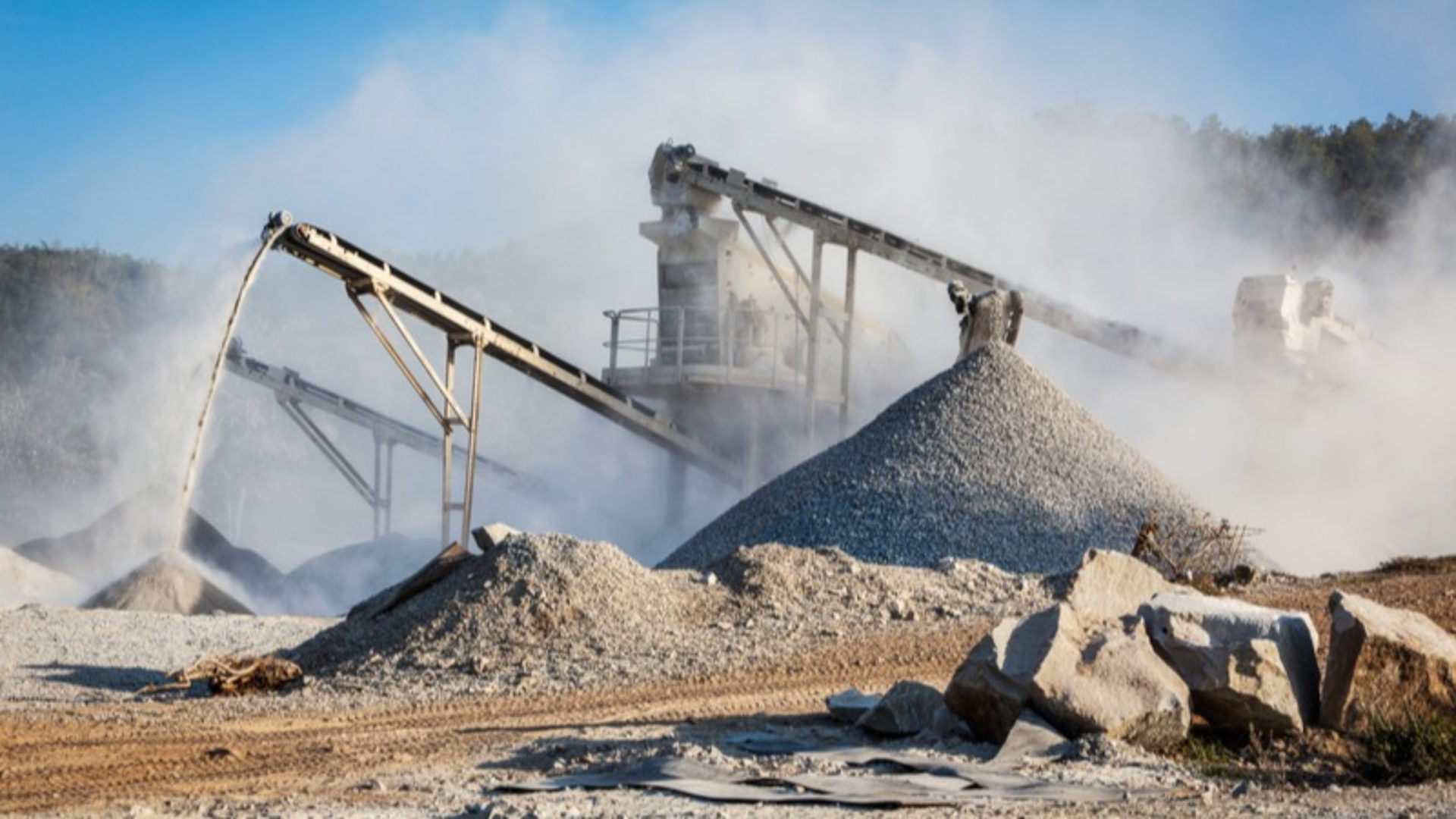
New research suggests that 175 million tonnes of CO2 could be captured annually during construction aggregate processing by using an alternate method.
Mechanochemical processing is a technique that involves the deformation, fracturing and cold wielding of particles during repeated collisions with a ball during high-energy milling.
The authors of the research, from the University of Strathclyde, claim this process would not require additional energy to trap CO2. The research is published in the Nature Sustainability journal.
The materials and construction industry accounts for 11% of global carbon emissions. More than 50 billion tonnes of rock are crushed worldwide every year. However, current standard crushing processes in construction and mining do not capture CO2.
The research documents how a large proportion of CO2 can be trapped in a stable, insoluble form in rocks composed of multiple different minerals by grinding it in CO2 gas. The resulting rock powders can then be stored and used in the environment for construction and other purposes.
Towards net-zero targets
If this method was adopted worldwide in aggregate production, it could potentially capture 0.5% of global CO2 emissions or 175 million tonnes of CO2 annually. This figure was calculated using Norway as an example, since the country publishes annual data on the volume of hard rock aggregate produced for its construction industry and its annual CO2 emissions.
Professor Rebecca Lunn, the principal investigator of the research, said Norway’s construction industry is “reasonably typical”, but some countries such as Australia and South Africa will produce much more due to their large mining industries.
“The hope is that the sector could reduce the emissions by adapting the current setups to trap carbon from polluting gas streams such as those from cement manufacture or gas-fired power stations,” Lunn said. “There are many industries for which there is currently no low-carbon solution and this research will allow direct gas capture of CO2 from hard to decarbonise industries, where a solution is not going to exist by 2050.”
Paris Agreement
Under the Paris Agreement, countries around the world agreed to limit global warming to below 2 deg C, preferably to 1.5 deg C, compared to pre-industrial levels. But to achieve this, countries must reduce their greenhouse gas emissions to net zero by 2050.
“In the future, we hope that the rock used in concrete to construct high-rise buildings and other infrastructure such as roads, bridges and coastal defences will have undergone this process and trapped CO2, which would otherwise have been released into the atmosphere and contributed to global temperature rise,” Lunn added.
Dr Mark Stillings, also one of the paper’s authors, said that further research could optimise the process to trap more CO2.
“Now we know that CO2 trapping in most hard rock can be done in a lab, we need to optimise the process and push the limits of how much can be trapped through the crushing technique,” Stillings said. “We then need to understand how this process can be scaled up from the lab to industry, where it can reduce global CO2 emissions.
“If this process was applied, the CO2 footprint associated with building houses and public infrastructure could be greatly reduced, helping to meet global objectives to combat climate change.”











